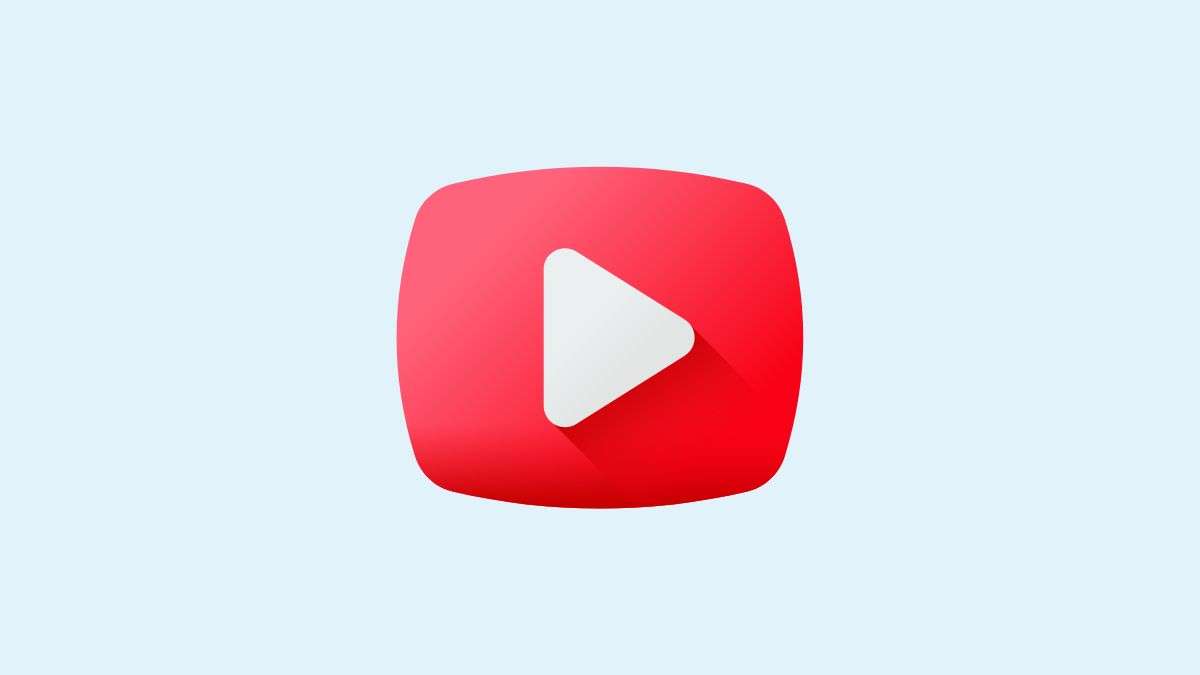Table of Contents
- Introduction
- The Birth and Early History of YouTube
- Rise to Prominence
- Evolution of Features
- Cultural Impact and Controversies
- Looking Ahead
- Conclusion
Introduction
The write-up explores the fascinating history of YouTube. For billions of people worldwide, YouTube has become integral to Internet culture and daily life. With over 2 billion monthly logged-in users, YouTube has revolutionized creating, sharing, and consuming video content online.
However, YouTube did not become the dominant global video platform overnight. The platform has undergone a remarkable evolution since its founding in 2005. This article will explore the fascinating history behind YouTube, tracking its origins, rise to prominence, key innovations, and cultural impact over the past 15+ years. Understanding YouTube’s backstory provides insight into how a simple video-sharing website transformed into one of the most influential sites in modern tech history.
Significance of YouTube in Modern Culture
It’s impossible to overstate YouTube’s significance in shaping Internet culture and how we communicate ideas through online video. Before YouTube, sharing video content globally was expensive and difficult. The platform made uploading and accessing video content free, easy, and available to anyone with Internet access.
This democratization fueled creativity as people began sharing vlogs, how-to videos, music videos, viral clips, and more. YouTube also gave birth to a new class of celebrity – homemade stars and influencers like PewDiePie, Jenna Marbles, and Smosh, who built massive audiences through vlogging and commentary. Additionally, YouTube provided musicians and filmmakers access to global distribution without traditional media gatekeepers. Suddenly, independent creators could find huge audiences on their terms.
Exploring the Evolution and History of YouTube
Given YouTube’s meteoric rise from a fledgling video-sharing site to one of the most trafficked sites globally, exploring its origin story and evolution reveals fascinating insights. As YouTube developed new features allowing content monetization, algorithmic recommendations, and massive viewership, it disrupted entire industries while enabling new creative economies to thrive online.
Understanding the platform’s history also provides perspective on the current landscape of online video. Moreover, tracking YouTube’s growth sheds light on how Internet communities, distribution models, and celebrity culture transformed in the digital age. Examining controversies and innovations that marked YouTube’s early days offers clues to challenges still shaping social media today. By charting YouTube’s past, we better understand its present – and perhaps glimpse hints of its future.
The Birth and Early History of YouTube
YouTube was founded in February 2005 by three former PayPal employees—Chad Hurley, Steve Chen, and Jawed Karim. The trio recognized the need for a convenient platform to upload and share videos online easily. Their initial idea was to create a video version of an online dating site focused on allowing users to share personal videos as a way to connect. However, they soon realized the broader potential for a hub where people could distribute and access all kinds of user-generated video content.
Initial Purpose and Vision
The initial purpose behind creating YouTube was to provide an easy way for ordinary people to distribute their self-produced videos globally. The founders envisioned a platform for users worldwide to freely upload, view, share, and comment on videos. They aimed to create a community where video content creators and viewers could interact. Their goal was to make the experience of discovering, watching, and sharing originally-created videos as seamless as possible.
Early Challenges and Milestones
YouTube faced early challenges in securing funding and attracting users when it first launched. However, by December 2005—less than a year after its founding—the site was already receiving over 8 million daily views. This demonstrated the massive early demand for a video-sharing community. Key milestones from YouTube’s first year include:
- Attracting venture capital funding from Sequoia Capital in November 2005
- Being acquired by Google for $1.65 billion in October 2006 – cementing its position as the go-to site for online video
- Launching the YouTube Partner Program in 2007 to allow popular creators to monetize their content
YouTube successfully tapped into a clear public demand for an accessible platform to upload, watch, and share video content online freely. Despite early struggles, the site’s exponential growth in its first few years showed that YouTube revolutionized how people interacted with video online.
Rise to Prominence
YouTube gained immense popularity among Internet users globally in the late 2000s. As high-speed Internet access spread, YouTube’s convenient video platform allowed people worldwide to easily upload, share, and view video content. A few key factors drove its rapid growth:
Viral Videos
YouTube became a hub for viral videos—funny, shocking, or emotionally powerful clips that were widely shared. Videos like “Charlie Bit My Finger” (later sold as NFT) and “David After Dentist” were early viral hits that exposed millions to YouTube. Friends sharing bizarre or hilarious videos likely encouraged many people to explore YouTube.
User-generated Content
YouTube tapped into people’s desire for self-expression by allowing anyone to broadcast themselves through video. This democratization unleashed a wave of vloggers, how-to channels, personal stories, and more. Giving the public an open platform to share their talents and perspectives fueled tremendous growth.
Mainstream Media Presence
As YouTube grew, mainstream media outlets and celebrities joined the platform. Seeing trusted brands and familiar faces on YouTube made it seem like a legitimate source for information and entertainment, not just a repository for amateur videos. This drew many new users into the YouTube ecosystem.
By now, YouTube’s accessibility, shareability, and diversity of content have cemented It as the Internet’s most dominant outlet for video. With over 2 billion monthly users, it remains the undisputed leader in its field.
Evolution of Features
YouTube has come a long way since its humble beginnings in 2005. Back then, it was a simple video-sharing website where users could upload and share clips up to 10 minutes long. Over the years, YouTube has introduced many new features that have transformed the platform.
Video Length and Quality
In the early days, videos on YouTube were grainy and limited to just a few minutes. However, as technology improved, YouTube increased the video length limit to 15 minutes in 2012. In recent years, it has enabled uploads of high-definition 4K videos that can be many hours long.
Monetization and the YouTube Partner Program
YouTube introduced advertising and revenue sharing for popular creators in 2007. This allowed influencers to earn money from their videos by joining the YouTube Partner Program. Additional monetization options like channel memberships, SuperChat, Shorts, and merchandise sales have also emerged.
Algorithms and Recommendations
YouTube’s algorithms curate content and provide video recommendations to each user. These algorithms have undergone major iterations over the years. Some changes improved recommendations, while others prioritized corporate media over individual creators. Overall, the algorithms still play a key role in shaping user experience.
From humble homemade videos to million-dollar productions, YouTube has come a long way thanks to new features aimed at creators and viewers. It will be fascinating to see what innovations emerge in the years ahead as YouTube continues to evolve.
Cultural Impact and Controversies
YouTube has profoundly impacted entertainment, politics, and education over the years. From viral videos shaping pop culture to providing a platform for political discourse, YouTube has become deeply ingrained in society.
Entertainment and Pop Culture
YouTube has given rise to Internet celebrities and influencers. Comedians, musicians, gamers, and more have built massive audiences on the platform. Trends and memes often originate on YouTube and shape wider pop culture. Shows like Epic Rap Battles of History and vloggers like PewDiePie rose to fame on YouTube.
Political Discourse
YouTube provides an accessible platform for political commentary from all sides. Politicians and advocacy groups leverage YouTube to promote their agendas. However, the spread of misinformation and extremist content has also raised concerns. YouTube has faced criticism for how its algorithms can lead users down rabbit holes of increasingly extreme content.
Education
From crash courses and videos to educational channels like SciShow and TED-Ed, YouTube has become a popular destination for lifelong learning. However, quality concerns persist around some educational content. YouTube has also been criticized for removing ads from sensitive but educational content.
Controversies
YouTube has weathered many controversies over issues like copyright, censorship, data privacy, and the spread of harmful content:
- Copyright strikes and claims from media companies over reused content
- Allegations of arbitrary censorship, especially around sensitive topics
- Concerns about how user data is collected and handled
- Criticism for how long it takes to address harmful misinformation and extremist content
Balancing an open platform with responsible content moderation remains an ongoing challenge. The site’s role in shaping culture and public discourse ensures it will continue facing scrutiny.
Looking Ahead
As YouTube continues to evolve, there are several key areas to watch that will shape the platform’s future direction. Regarding innovation, we may see further developments in areas like virtual reality and live streaming to provide more immersive and real-time viewing experiences. There is also scope for enhancements in content personalization through improved recommendation algorithms and AI-enabled curation.
Potential Innovations
Some potential innovations that could emerge in YouTube’s future include:
- More advanced VR and AR capabilities to make videos more interactive and lifelike.
- Tools for generating automated video highlights, summaries, and trailers.
- Integrated live streaming for gaming, concerts, sports, and more.
- Enhanced content moderation through AI to better handle policy issues.
Opportunities and Challenges
As YouTube evolves, some key opportunities and challenges include:
- Leveraging viewer data to provide ultra-personalized recommendations.
- Expanding e-commerce features for video creators to sell goods.
- Maintaining brand safety for advertisers while supporting creator freedom.
- Managing the spread of misinformation and enforcing content policies at scale.
Adapting to Digital Trends
To continue adapting in a changing digital landscape, YouTube may focus on areas like:
- Catering to mobile viewers as Internet consumption goes mobile-first.
- Supporting niche communities and creators as interests fragment.
- Exploring alternative revenue models such as subscriptions and tipping.
Conclusion
The history of YouTube is a chronicle of democratizing media, fostering a global community, and cultivating a platform where entertainment, education, and activism can coalesce. From its inception in 2005 as a simple video-sharing website, YouTube has burgeoned into a ubiquitous part of our digital lives, a repository of human experiences, and an engine for creating economic opportunity.

YouTube’s expansion has mirrored the increased penetration of the Internet and smartphones, becoming a near-omnipresent service reaching billions. Its effect on culture, politics, and society has been profound. Viral videos have triggered social movements, unknown artists have found fame, and even metamorphosed political campaigns, giving voice to the voiceless and a platform for the previously powerless.
However, it is crucial to address the challenges YouTube faces. As the site has grown, so have concerns over content moderation, misinformation propagation, and its algorithms’ ethical ramifications, which influence what billions of users see. The imperative for YouTube to balance freedom of expression with social responsibility is ever-present and evolving.
In closing, YouTube’s history reflects our modern digital age—its boundless potential and its pressing challenges. As we look to the future, YouTube’s journey is far from complete, with the platform continuing to adapt and evolve within the ever-changing landscape of the Internet and society. The next chapters will undoubtedly add more layers to this complex tapestry, shaped by technological innovation, user behavior, and the global socio-political climate.
